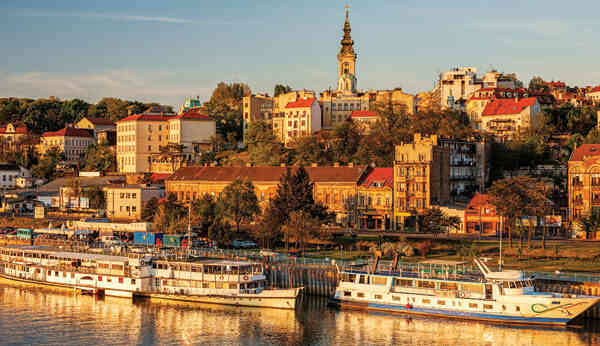Located in Eastern Europe, the country of Serbia historically has strong ties with Russia. Even the Serbian and Russian languages are similar to a certain extent, and other similarities can be traced in culture, national cuisine and architecture. This is a very friendly region, which has become very attractive and flourishing since the end of the conflict in the Balkans.
Facts about Serbia
- After the collapse of Yugoslavia, it was part of the Union of Serbia until 2006 and Montenegro.
- Kosovo is de jure part of Serbia, but de facto it is a partially recognized state, and is not controlled by the Serbian authorities.
- Most of the Serbs speak Serbo-Croatian, various dialects of which are also common in Montenegro and Croatia ( interesting facts of Croatia).
- The capital of Serbia, the city of Belgrade, is one of the oldest in Europe. It was founded about 2300 years ago.
- Belgrade has a population of 1.3 million. And the population of the whole of Serbia is 6.9 million.
- Primitive people lived on the territory of modern Serbia back in Paleolithic times, as evidenced by stone tools discovered by archaeologists here (interesting facts about ancient people).
- The most popular drink among Serbs is coffee. But he hardly drinks tea at all. Some Serbs sincerely believe that this is some kind of medicine.
- Some of the baths that Serbia is famous for were built here during the Roman Empire, and they still function.
- About 30% of all raspberries in the world are grown in Serbia.
- For a long time, Serbian territories were part of the Ottoman Empire.
- The Serbian flag looks like a Russian tricolor turned upside down (interesting facts about flags ).
- Serbian swearing is very similar to Russian.
- The vast majority of Serbs are very warm towards the Russians, considering Russia a brotherly country.
- In Serbia, it is not customary to take off your shoes when visiting, even if it is wet and dirty outside.
- Two alphabets are unofficially used here – Cyrillic and Latin. Recently, the Latin alphabet has become more popular, but the Cyrillic alphabet is the official one.
- Most Serbs live with their parents until the age of 30 on average.
- Many drinking establishments in Serbia do not have a kitchen. And where you can eat delicious food, you can easily have no alcohol.
- Despite the similarity of the Serbian language with Russian, the sound «ы» is absent in it, and it is not given to Serbs at all.
- The total length of the borders of Serbia is 2364 km.
- More than a dozen Roman emperors were born in Serbia at one time.
- Red wine in Serbia is called black.
- About a third of all Serbian territories are occupied by forests. Half of them are owned by the state, the other half by private individuals.
- Serbia has one of the lowest birth rates in the world.
- Russian bread in Serbia is called almost ordinary black bread. Almost, because it is sweet.
- Serbian railways are notable for the fact that trains are almost always late here.
- The most famous ethnic Serb is the inventor Nikola Tesla, who is still very revered here (interesting facts about Nikola Tesla).
- In many regions of Serbia, Hungarian, Slovak and Romanian also have official status.
- Serbia cares a lot about the environment. Excessive deforestation was banned here in the 14th century.
- Serbs make up about 83% of the population of Serbia. The rest are Hungarians, Albanians, Gypsies, Montenegrins, Bulgarians, Romanians and representatives of other nationalities.
- Almost everywhere in Serbia you can safely drink water straight from the tap. If not, a warning sign will be posted.
- The Serbian region of Sjenica is the coldest permanently inhabited place in Europe. Once it was -39 degrees.
- A unique Serbian spruce grows in Serbia, which is not found anywhere else in the world (interesting facts about spruce).
- Serbian drivers almost never use turn signals when rebuilds.
- Theft is extremely rare in Serbia. In supermarkets, instead of lockers where you can leave bags, there are simply hooks on which you can hang your bag.
- The word «vampire», which has become common to a number of world languages, comes precisely from the Serbian language.
